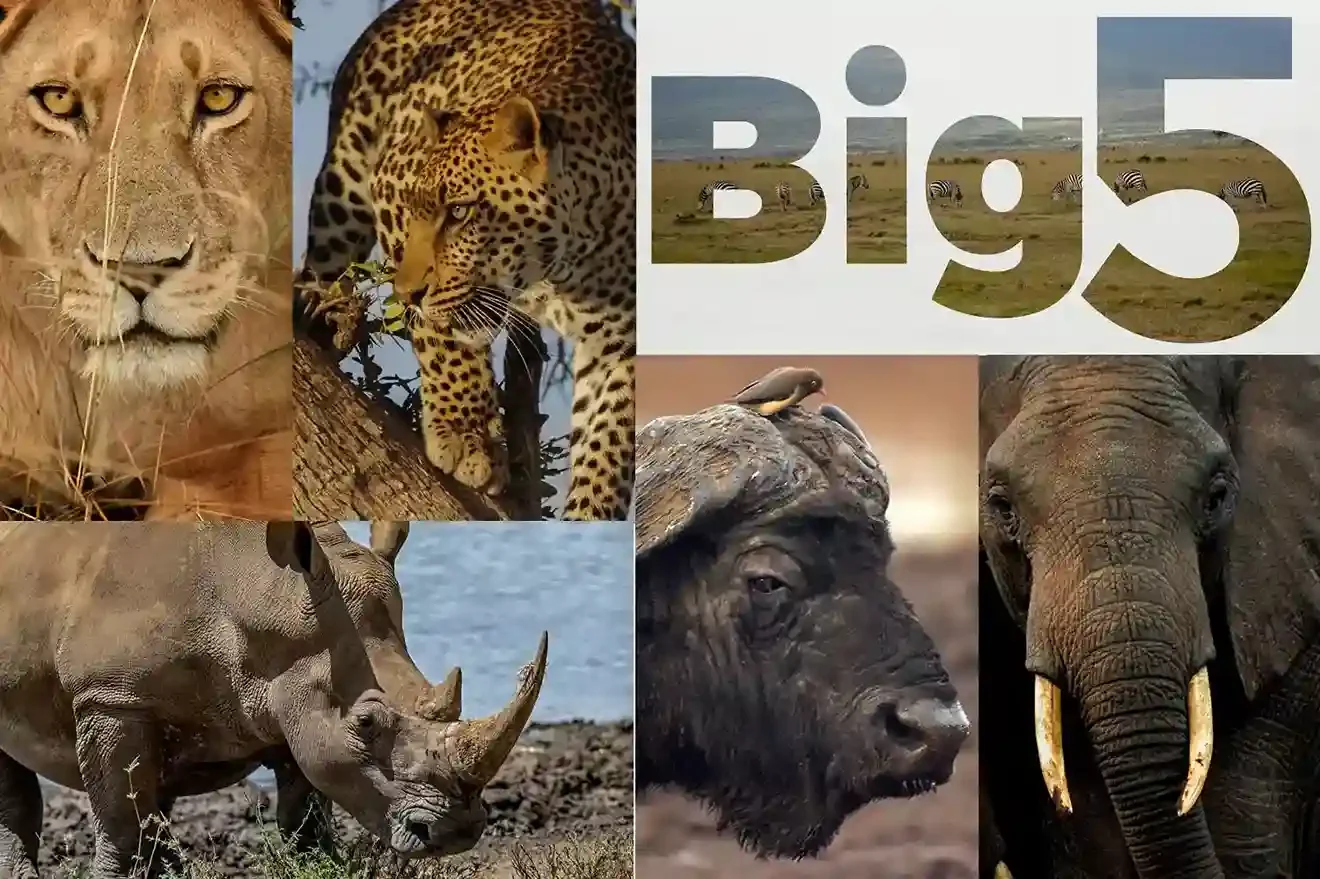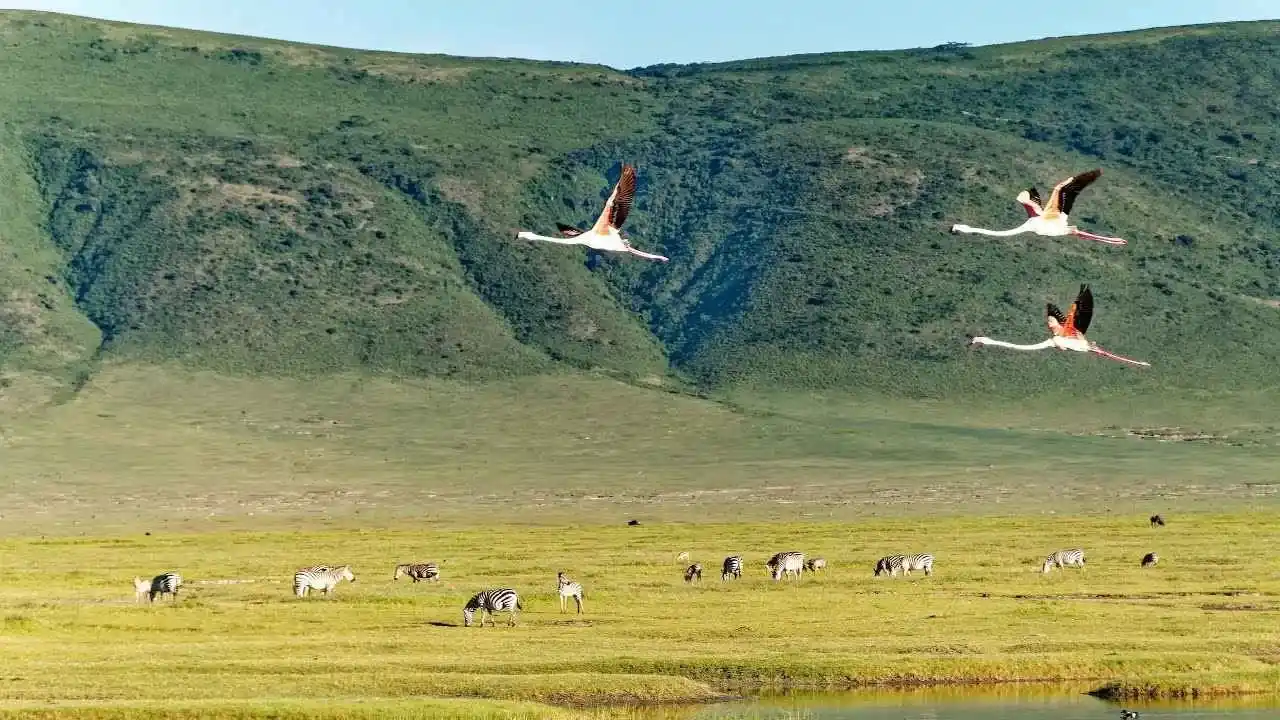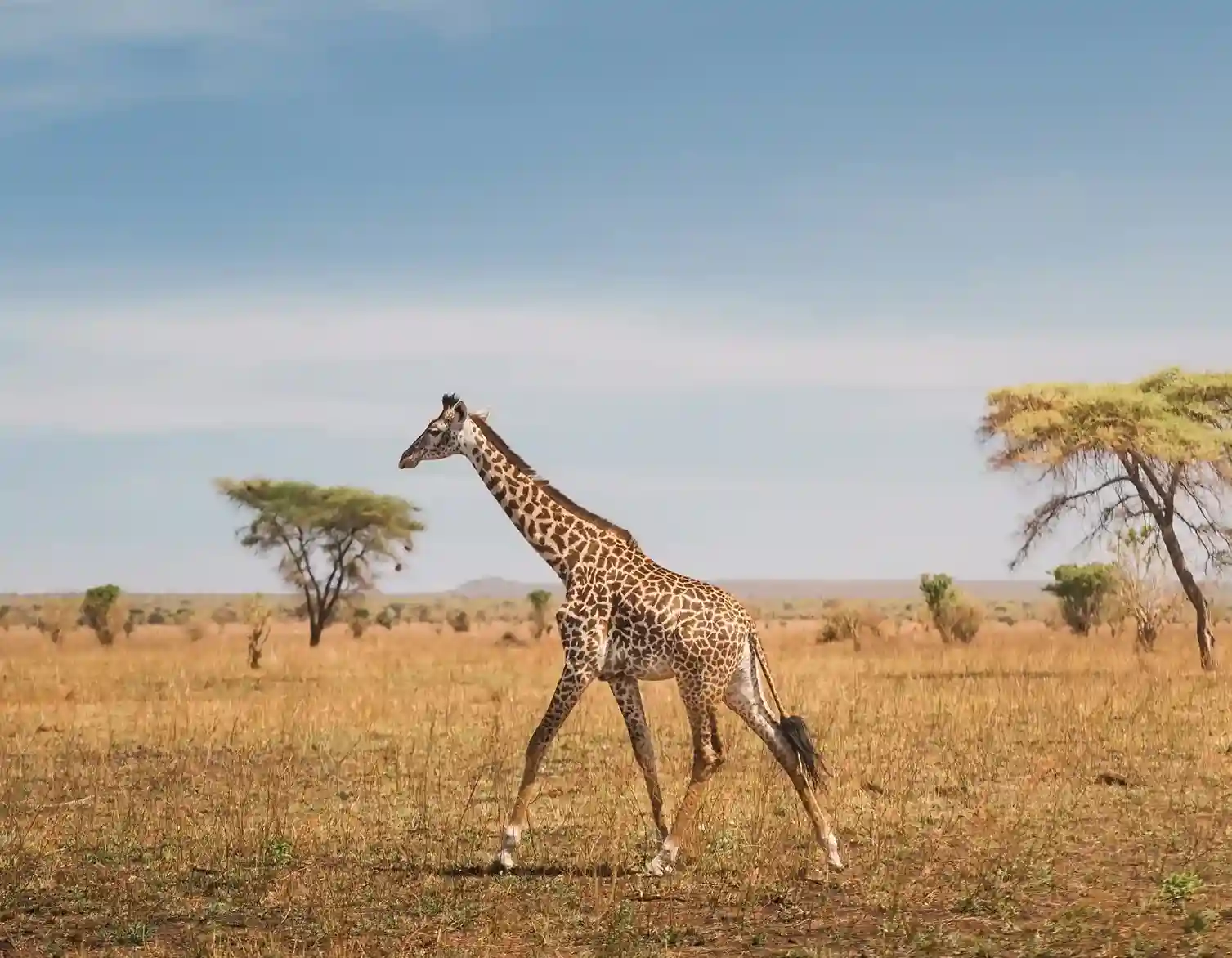Where to See the Big Five in Tanzania: Your Ultimate Guide
If spotting the Big Five is on your bucket list, Tanzania is one of the best places on earth to do it. Lions roam the vast savannahs, elephants gather in large herds, leopards prefer wooded hideouts, rhinos are best seen in protected reserves, and buffalos thrive in grasslands and wetlands. Each of these iconic animals is tied to a unique park or reserve, making Tanzania a dream destination for wildlife lovers. Below is your ultimate guide on where to see the Big Five in Tanzania, carefully crafted to help you plan an unforgettable safari with Capable Africa Tours.
Start Your Big Five Adventure
Your Guide to Seeing the Big Five in Tanzania
Tanzania is a premier destination for spotting the Big Five—lion, elephant, buffalo, leopard, and rhinoceros—thanks to its diverse ecosystems and well-protected national parks. Whether you’re drawn to the dramatic Great Migration in the Serengeti or the dense wildlife populations of the Ngorongoro Crater, Capable Africa Tours crafts tailored safaris to maximize your chances of seeing these majestic animals. This comprehensive guide details the best parks, optimal seasons, costs, and practical tips to ensure your Big Five safari is a success.
What Are the Big Five?
The term “Big Five” originally referred to the five African animals most challenging for hunters: lion, elephant, buffalo, leopard, and rhinoceros. Today, it’s a bucket-list goal for safari-goers seeking to spot these iconic species in the wild. Each animal offers a unique sighting experience, from the stealthy leopard to the mighty rhinoceros, and Tanzania’s parks provide some of the best opportunities to see them all.
Top Tanzania National Parks for the Big Five
If you’re coming to Tanzania and want the best chance to spot the Big Five (lion, leopard, elephant, buffalo, and rhino), focus on these top parks: Serengeti National Park for its vast savannahs and big cat sightings, Ngorongoro Crater for a concentrated mix of wildlife including black rhino, Tarangire National Park for huge elephant herds, Ruaha National Park for lions and rugged wilderness, and Selous (Nyerere) National Park for a more remote safari with diverse game. These national parks are renowned for their rich biodiversity and high chances of spotting the Big Five. Below, we explore the top destinations, their unique features, and the likelihood of seeing each animal, based on data from Tanzania National Parks (TANAPA) and Capable Africa Tours’ expertise.
1. Ngorongoro Crater: The Big Five Haven
The Ngorongoro Crater, a UNESCO World Heritage Site, is often called the “Garden of Eden” for its dense wildlife population within a 260-square-kilometer caldera. It’s one of the few places where you can potentially see all Big Five in a single day.
- Lion: Over 60 lions live in the crater, with a 90% sighting rate.
- Elephant: Mostly bulls, with a 70% sighting rate.
- Buffalo: Large herds, 95% sighting rate.
- Leopard: Elusive but present, 40% sighting rate.
- Rhinoceros: Rare black rhinos, 30% sighting rate due to conservation efforts.
Why Visit? Compact area, diverse wildlife, and stunning scenery. Capable Africa Tours offers day trips or multi-day safaris including Ngorongoro.
2. Serengeti National Park: The Great Migration Stage
The Serengeti, spanning 14,750 square kilometers, is world-famous for the Great Migration and its abundant Big Five populations. Its open plains make spotting wildlife easier, especially during the dry season.
- Lion: Over 3,000 lions, 95% sighting rate.
- Elephant: Large herds, 80% sighting rate.
- Buffalo: Abundant, 90% sighting rate.
- Leopard: Common in riverine areas, 50% sighting rate.
- Rhinoceros: Rare, 20% sighting rate due to poaching threats.
Why Visit? Iconic landscapes, Great Migration (June–October), and diverse wildlife. Capable Africa Tours designs Serengeti itineraries for optimal Big Five sightings.
3. Tarangire National Park: Elephant Paradise
Tarangire, known for its baobab trees and large elephant herds, spans 2,850 square kilometers. It’s a quieter alternative to the Serengeti with excellent Big Five opportunities.
- Lion: Common prides, 80% sighting rate.
- Elephant: Over 3,000 elephants, 95% sighting rate.
- Buffalo: Large herds, 85% sighting rate.
- Leopard: Frequently spotted in trees, 60% sighting rate.
- Rhinoceros: Absent due to historical poaching.
Why Visit? Fewer crowds, massive elephant herds, and scenic landscapes. Capable Africa Tours includes Tarangire in multi-park safaris.
4. Ruaha National Park: Off-the-Beaten-Path Gem
Ruaha, in southern Tanzania, is the largest national park at 20,226 square kilometers. Its remote location offers a wild, uncrowded safari experience.
- Lion: Strong prides, 85% sighting rate.
- Elephant: Large populations, 80% sighting rate.
- Buffalo: Abundant herds, 90% sighting rate.
- Leopard: Common, 65% sighting rate.
- Rhinoceros: Extremely rare, 10% sighting rate.
Why Visit? Remote, less touristy, and diverse ecosystems. Capable Africa Tours offers exclusive Ruaha safaris for adventurous travelers.
5. Lake Manyara National Park: Tree-Climbing Lions
Lake Manyara, covering 325 square kilometers, is famous for its tree-climbing lions and vibrant birdlife. It’s a great add-on to a Big Five safari.
- Lion: Tree-climbing lions, 75% sighting rate.
- Elephant: Common, 80% sighting rate.
- Buffalo: Large herds, 85% sighting rate.
- Leopard: Elusive, 40% sighting rate.
- Rhinoceros: Absent due to habitat limitations.
Why Visit? Compact park, unique lion behavior, and flamingo-filled lake. Capable Africa Tours integrates Lake Manyara into short safaris.
Best Time to See the Big Five in Tanzania
The best time to spot the Big Five depends on Tanzania’s seasons, which affect animal behavior and visibility. Here’s a breakdown:
- Dry Season (June–October): Ideal for Big Five sightings. Sparse vegetation and limited water sources concentrate animals near rivers and waterholes. Lions, elephants, and buffalo are easier to spot, with leopards lounging in trees. Rhinos remain elusive but are more visible in Ngorongoro.
- Wet Season (November–May): Lush landscapes and fewer crowds. The wildebeest calving season (January–March) in the Serengeti attracts predators like lions and leopards. Vegetation can obscure animals, but elephants and buffalo are still common.
- Shoulder Seasons (April–May, November): Affordable rates, fewer tourists, and good birdwatching. Big Five sightings are possible but less predictable due to rain and denser foliage.
Pro Tip: For the best chance of seeing all Big Five, combine Ngorongoro Crater with Serengeti during the dry season. Capable Africa Tours can tailor your itinerary to seasonal patterns.
Big Five Safari Costs: Budget to Luxury
A Big Five safari in Tanzania can fit various budgets. Costs depend on accommodation, transport, group size, and duration. Capable Africa Tours offers flexible options:
- Budget Safari: $200–$350 per person per day. Includes camping, shared game drives, and basic meals. Ideal for Ngorongoro or Tarangire day trips.
- Mid-Range Safari: $350–$600 per person per day. Features comfortable lodges, private vehicles, and full-board meals.
- Luxury Safari: $600–$1,500+ per person per day. Includes upscale lodges, private guides, and optional activities like hot-air balloon rides.
Additional Costs:
- Park Fees: $30–$100 per person per day (e.g., Ngorongoro: $70, Serengeti: $60).
- Visa: $50–$100, depending on nationality.
- Tips: $10–$30 per group per day for guides and staff.
- Flights: International ($800–$2,000), domestic ($100–$300).
Cost-Saving Tip: Join a group safari or travel in the wet season for lower rates. Capable Africa Tours offers discounts for early bookings.
Practical Tips for Your Big Five Safari
To ensure a successful Big Five safari, preparation is key. Capable Africa Tours shares these expert tips:
- Pack Smart: Wear neutral-colored clothing (avoid blue/black to deter tsetse flies), bring binoculars, a high-quality camera with zoom, sunscreen, a hat, and sturdy shoes.
- Health Precautions: Get yellow fever vaccination and malaria prophylaxis. Use insect repellent and drink bottled water.
- Photography Tips: Use a camera with at least 300mm zoom for leopards and rhinos. Early morning and late afternoon offer the best light.
- Safety Guidelines: Follow your guide’s instructions, maintain a safe distance from wildlife, and avoid standing in open vehicles.
- Connectivity: Purchase a local SIM or eSIM (e.g., Airalo) for data. Wi-Fi is limited in remote parks.
- Respect Wildlife: Avoid loud noises or sudden movements to prevent disturbing animals. Capable Africa Tours emphasizes sustainable tourism.
Combining Your Big Five Safari with Other Experiences
A Big Five safari can be paired with other Tanzanian adventures for a complete journey. Capable Africa Tours offers seamless combinations:
- Zanzibar Beach Holiday: Relax on pristine beaches after your safari. Flights from Arusha to Zanzibar take 1–1.5 hours ($100–$200).
- Kilimanjaro Trek: Climb Africa’s highest peak before or after your safari. A 7-day trek costs $1,500–$2,500.
- Cultural Tours: Visit Maasai or Hadzabe communities for immersive cultural experiences. Day tours start at $50 per person.
What to Expect on a Big Five Safari
Your Big Five safari with Capable Africa Tours will be an adventure filled with early morning game drives, breathtaking landscapes, and thrilling wildlife encounters. Expect 6–8 hours daily in a 4x4 vehicle, with stops for sightings and meals. Lions and buffalo are often spotted in groups, while leopards and rhinos require patience due to their elusive nature. Evenings are spent in lodges or camps, where you might hear distant lion roars or see stars over the savannah. Our expert guides enhance your experience with in-depth knowledge of animal behavior and park ecosystems.
Book Your Big Five Safari with Capable Africa Tours
Ready to witness the Big Five in Tanzania’s wild heart? Capable Africa Tours offers expertly crafted safaris with local guides, sustainable practices, and itineraries tailored to your budget and interests. From Ngorongoro’s crater to Serengeti’s plains, we’ll ensure your safari is unforgettable.
- 95% Big Five Sighting Success Rate
- Customizable Itineraries for All Budgets
- Expert Local Guides with Deep Wildlife Knowledge
- Eco-Friendly and Community-Supporting Tours
- Seamless Multi-Destination Adventures


